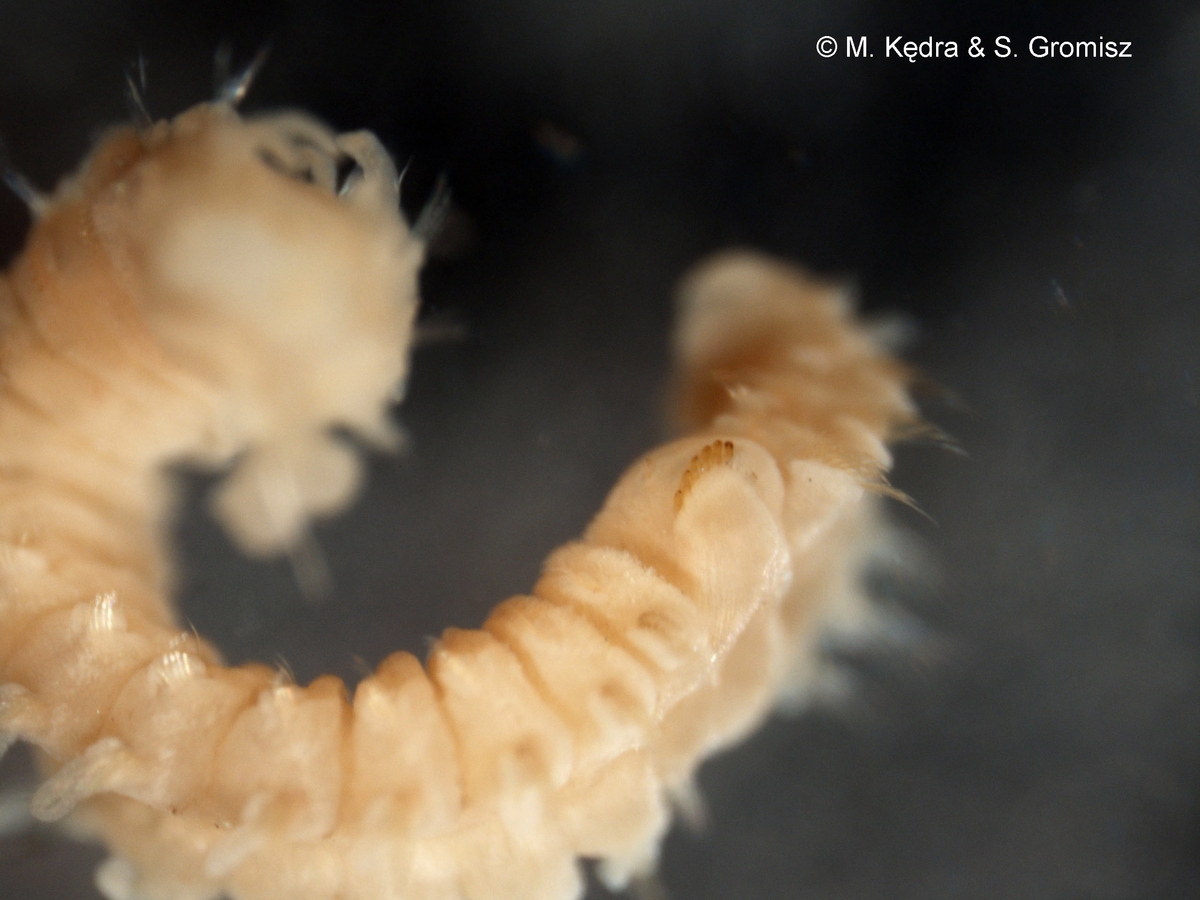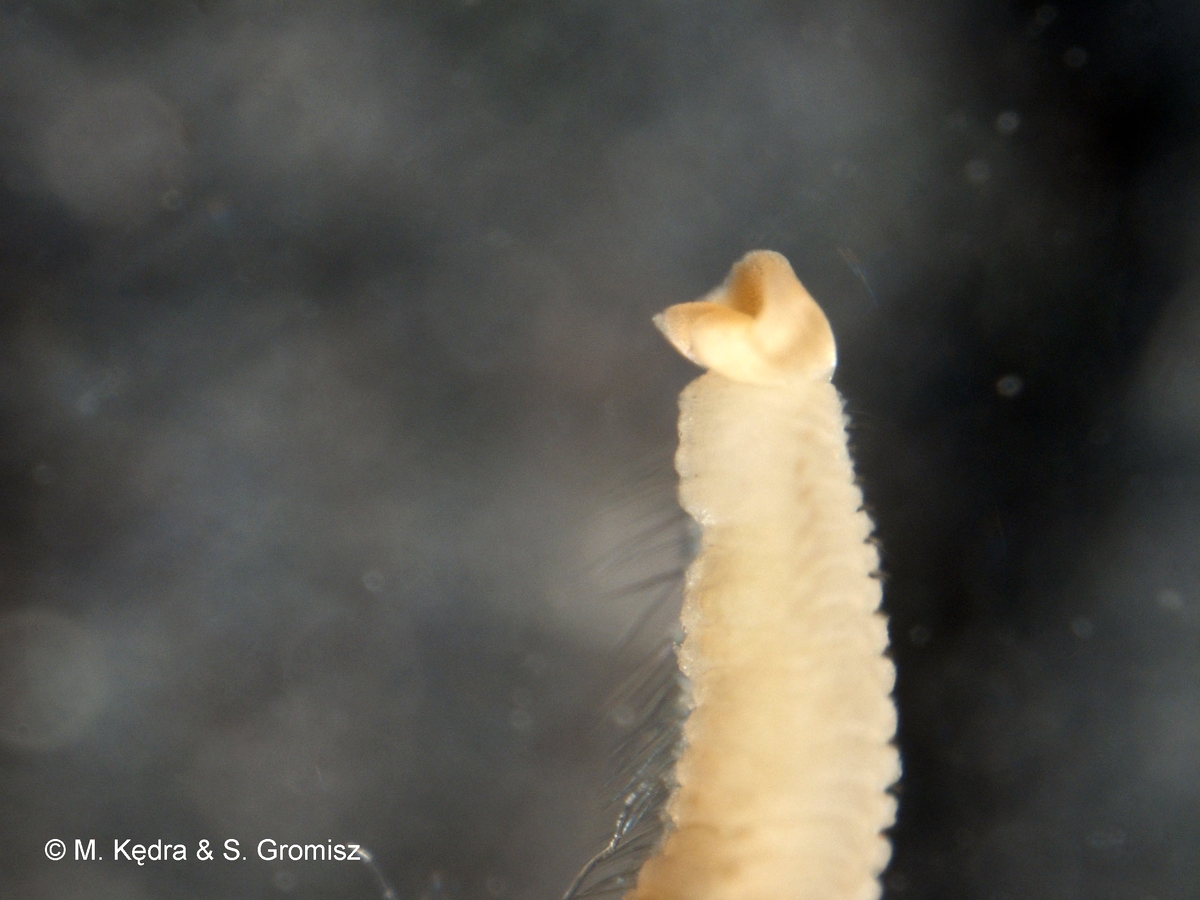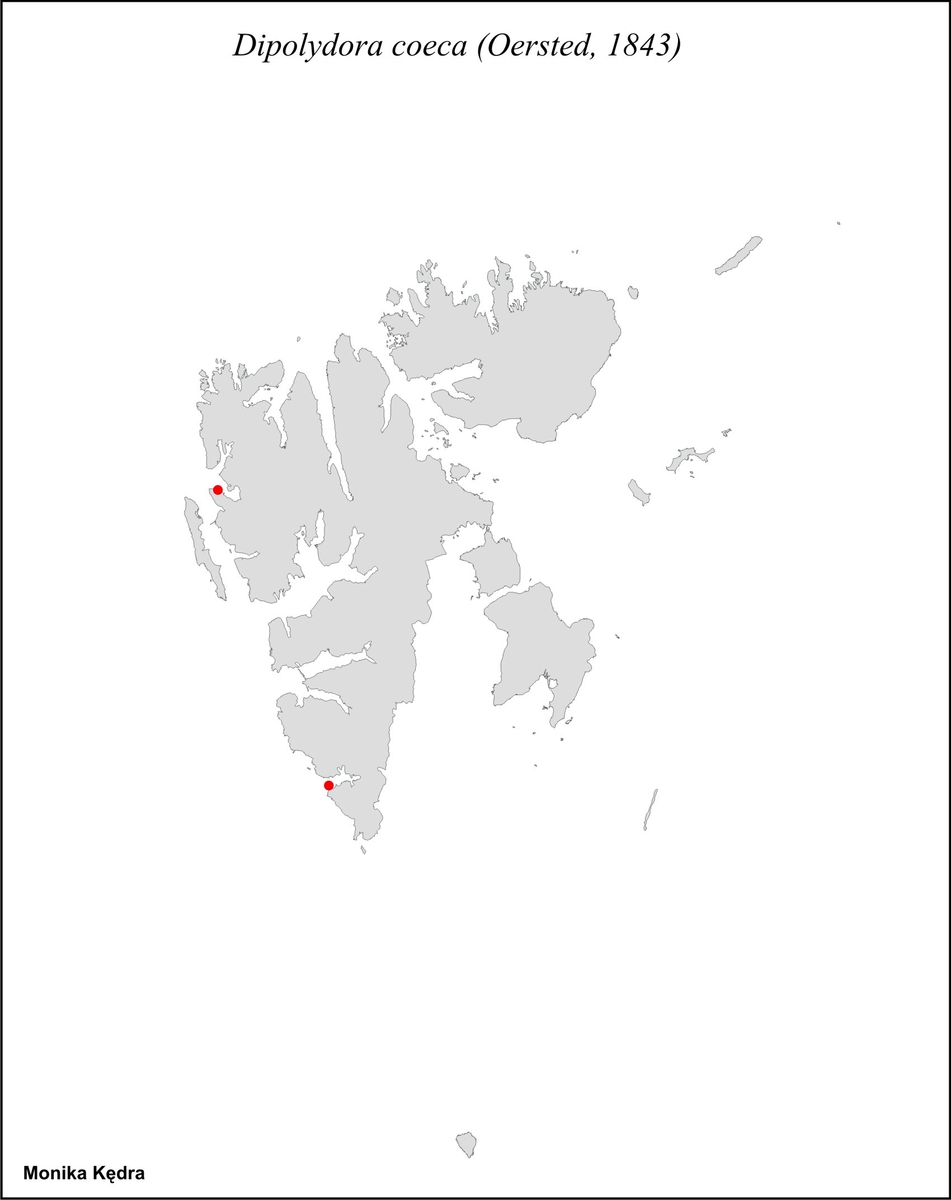Dipolydora coeca (Örsted, 1843)

|

|

|
Polydora caeca (Örsted, 1843)
Leucodorum caecum Oersted, 1843
Leucodore caeca Malm, 1874
Polydora saint-josephi Eliason 1920
Polydora aeca Söderström, 1920
Distinguishing characteristics
First notopodium with chaetae.
Modified chaetae from 5th chaetiger thick and blunt with bent tips and subdistal cavities with a membrane.
Branchiae start at segment 8 or 9.
Pygidium with a dorsally incised funnel.
Species description
Body broad anteriorly, narrowing posteriorly. Prostomium anteriorly incised, without antenna, posteriorly with a caruncle reaching chaetiger 2-5. Two long palps present. 0-4 eyes. Branchiae start at segment 8 or 9, disappearing in mid-body or posterior segments. First notopodium with chaetae. 5th chaetiger with a few lanceolate chaetae, 6-16 modified chaetae in a row and capillary chaetae ventrally. Modified chaetae thick and blunt with bent tips and subdistal cavities with a membrane. 7th and following neuropodia with 3-7 strongly bent hooded hooks. 45th and following notopodia with capillaries and a few needle-like chaetae. Pygidium with a dorsally incised funnel. Ventral and lateral incisions often also present.
Size
Up to 60 mm for 130 segments.
Color
Yellowish.
Habitat
In litothamnia and kelp holdfasts.
Mobility
Discretely motile.
Feeding
Surface deposit feeder.
Facultative suspension feeder.
Life cycle
Brooding of encapsulated embryos inside the tube with release of planktotrophic larvae or inside the tube with direct development.
Distribution
North Sea, Skagerrak, Kattegat, Öresund, Arctic, North Pacific, Atlantic to South Africa, Mediterranean, Red Sea, Indian Ocean.

